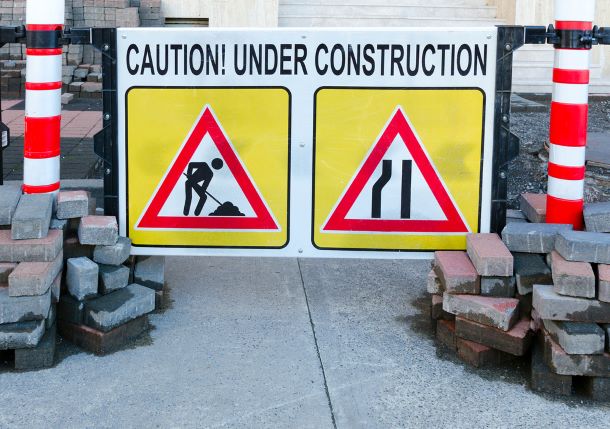The Role of Effective Signage in Enhancing Safety in Public Spaces
Key Takeaways
- Understand the importance of effective signage for ensuring public safety.
- Explore various types of safety signs and their applications.
- Gain insights into the latest innovations in signage technology.
Safety signage emerges as a crucial infrastructure component in the diverse surroundings of bustling public spaces. These signs act as silent sentinels, illuminating paths and providing essential information that helps individuals navigate safely and efficiently. Their presence underscores a broader commitment to public safety, demonstrating how indispensable effective signage is to everyday peace and crisis management.
In environments ranging from the organized chaos of airports to the serene expanses of urban parks, safety signs are steadfast reminders of regulations, potential dangers, and navigational cues. These signs are instrumental not only for compliance purposes but also for ensuring that every person—whether a local or a visitor—has clear guidance to navigate spaces safely. This fundamental role in everyday safety protocols makes understanding these signs essential.
Understanding Safety Signage
Safety signage comprises visual symbols and cues, often standardized through colors and shapes, specifically designed to convey essential information at a glance. Such signs are crucial across various settings, including workplaces, educational institutions, and public transport systems, where immediate comprehension can mean the difference between maintaining safety and encountering harm. The effectiveness of these signs depends not only on their design and placement but also on their ability to integrate into existing safety protocols. Among these vital tools, “No Exit” signs serve a critical function by preventing people from heading towards potentially hazardous, non-existent exits during emergencies.
Moreover, safety signage is a dynamic field that requires periodic updates and reviews to remain effective in ever-changing environments. What worked a decade ago might be less effective today due to regulation changes, user behavior, or technological advances. Therefore, organizations must commit to an ongoing assessment process.
Types of Safety Signs
Mandatory Signs
Mandatory signs instruct individuals to perform a certain action in the interest of safety or protocol compliance. For example, a sign mandating the use of personal protective equipment in a laboratory is a common site-specific requirement that ensures everyone adheres to safety standards protecting the individual and the environment. The impact of these signs lies in their ability to enforce positive behavior consistently, reducing the risk of non-compliance.
Warning Signs
These signs act as alerts informing individuals of potential hazards or risky conditions. A sign warning of a wet floor in a grocery store or cautioning high voltage on electrical equipment is designed to make people aware of challenges before encountering them, thereby minimizing the risk of accidents. Such proactive measures are simple yet effective in safeguarding public well-being.
Prohibition Signs
Prohibition signs specify prohibited actions, such as not entering unauthorized areas or banning smoking in certain zones. These signs play a significant role in maintaining order and safety, especially in shared public spaces where individual actions need to be regulated for collective safety. By clearly communicating restricted actions, these signs help minimize disruptions and maintain a standard of conduct.
Innovations in Signage Technology
The realm of signage is continually evolving with technological advancements. Photoluminescent materials have transformed the visibility and effectiveness of safety signs, ensuring they remain visible even during power outages or in dimly lit conditions. These self-illuminating signs have become indispensable during emergencies, providing an unerring path to safety, especially in environments like underground transit systems or during nighttime evacuations.
Another major innovation is the rise of digital signage, which offers dynamic, real-time updates capable of conveying information swiftly and accurately. This technology is increasingly adopted in high-traffic areas like airports, train stations, and shopping malls, where the turnover of information is high and time-sensitive. Digital signage’s adaptability makes it a vital tool in the modern safety arsenal, enabling immediate updates and interactive capabilities that can guide user behavior effectively.
Case Studies: Effective Use of Safety Signs
The practical application of safety signs in real-world scenarios demonstrates their importance. Implementing effective safety signage in workplaces has significantly reduced accident rates. A recent study highlighted by Safety and Health Magazine exemplifies how signage can systematically prevent workplace accidents and improve responses to emergencies, reinforcing their critical role in ensuring a safe environment for all. For instance, companies that incorporated comprehensive signage systems into their safety protocols reported a significant drop in incident rates, illustrating the profound impact of visual cues in proactive hazard management.
Common Challenges in Implementing Safety Signage
Despite the potential benefits, deploying effective signage can present several challenges for organizations. Issues such as poor placement, ambiguous messaging, or a lack of regular updates can severely diminish the effectiveness of safety signs. Addressing these challenges involves careful planning and a commitment to continuous improvement. Organizations should regularly audit their signage systems and seek user feedback to ensure that signs meet their intended purposes.
Additionally, understanding the cultural and linguistic diversity of the audience is crucial in designing universally comprehensible signage. In multicultural societies, this might mean using symbols alongside text to transcend language barriers, thus ensuring that the message is understood by all individuals, regardless of their linguistic background.
Creating a Signage Plan
To achieve maximum efficacy, developing a comprehensive signage plan is crucial. This involves conducting an initial assessment of the site’s unique needs, designing signs that meet these requirements, and strategically placing them for optimal visibility and comprehension. Expert advice, such as that published on FMLink, can provide valuable insights into creating effective signage systems and ensuring consistent message delivery.
A successful signage plan also includes a maintenance schedule to ensure that signs remain in good condition and are updated in response to new standards or environmental changes. This proactive approach maintains compliance and upholds the integrity of the site’s safety measures.
Conclusion
Signage in public spaces extends beyond regulatory compliance; it is critical in ensuring safety and order. Organizations can create welcoming and safe environments by keeping abreast of the latest developments in signage technology and maintaining a focus on user-centered design and placement. This ongoing commitment to effective signage reflects a broader dedication to public safety and enhances the quality of life in shared spaces. As public spaces grow and evolve, effective safety signage becomes increasingly apparent as a visible reminder of our commitment to safety and well-being.






